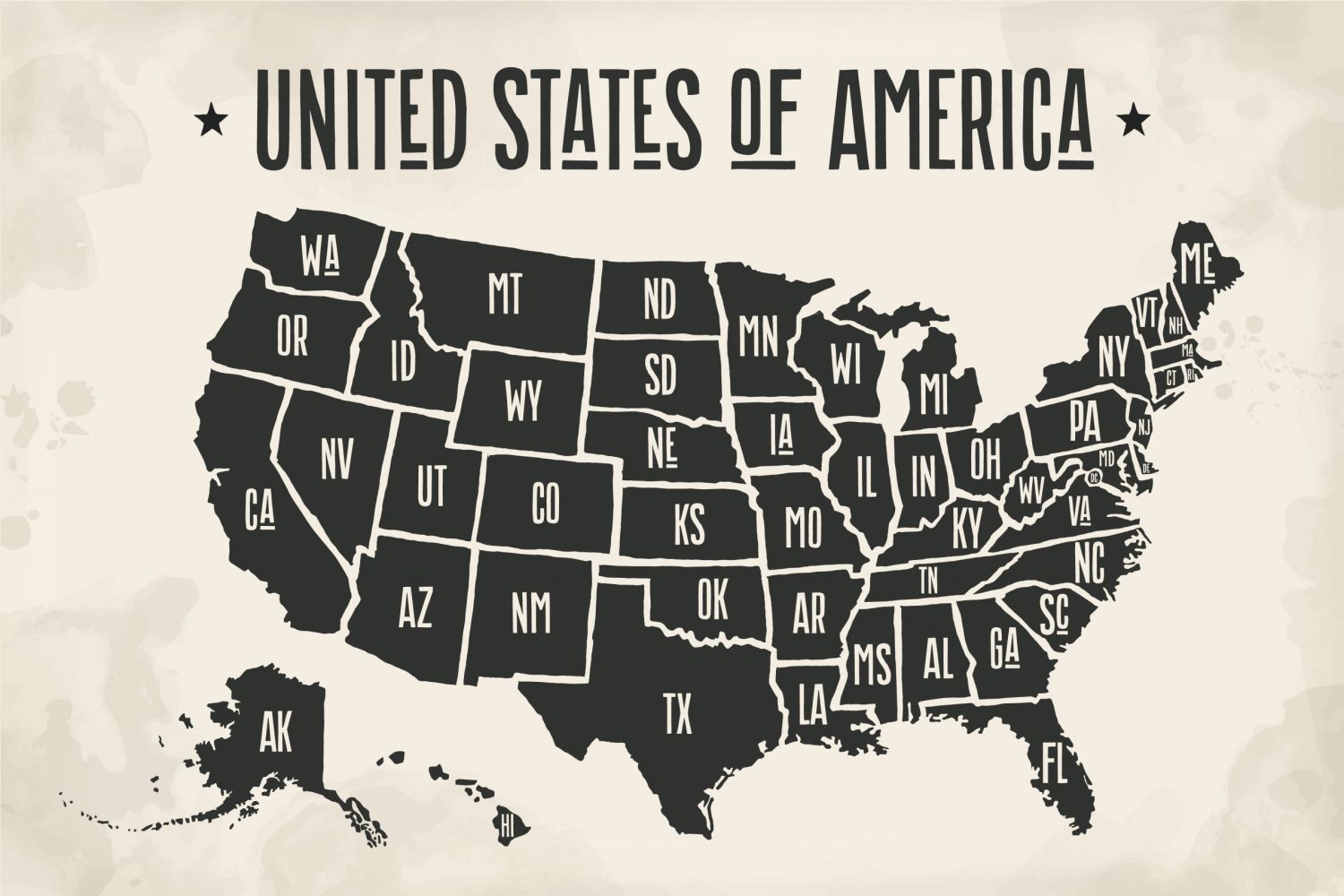April is generally tax season (although COVID-19 has pushed back the 2020 filing deadline to July). While filing and paying taxes can be painful, governments offer several deductions that can reduce a family’s tax burden and increase any possible refund. Families who invest in 529 plans may be eligible for tax deductions. A 529 plan can be a great alternative to a private student loan. This article will explain the tax deduction rules for 529 plans for current and future investors.
What Is a 529 Plan?
A 529 plan – named after Section 529 of the Internal Revenue Code – is a tuition account established and operated by a state. The plan allows a family to set money aside for a student’s education. All 50 states and Washington, D.C., offer 529 plans.
There are two types of 529 plans. Both, as explained in more detail later, offer significant tax advantages.
With a prepaid tuition plan, the family identifies a qualifying institution of higher education. (While the rules vary from state to state, usually, public universities qualify.) The family’s contributions go toward the school’s tuition and fees. Prepaid plans usually do not allow families to prepay room and board. The primary benefit of prepaid tuition plans is that they are guaranteed to increase in value at the same rate as college tuition, giving families peace of mind.
An education savings plan (or college savings plan) is a type of investment account where families can save for college. However, unlike a prepaid tuition plan, funds from an education savings plan can be used for tuition and room and board.
Tax Deductions vs. Penalties
The greatest benefit of 529 plans is their tax advantages. But to understand these benefits, you must understand deductions and penalties.
Tax penalties punish taxpayers for taking certain actions. Generally, they exist to discourage people from making certain financial decisions. For example, there is a tax penalty for withdrawing funds from retirement accounts before reaching a certain age.
On the other hand, tax deductions reward taxpayers under certain circumstances. Tax deductions reduce a filer’s overall tax liability to reward them for responsible financial choices. Two examples of deductions are income reductions for families with dependents and those paying student loan interest.
Federal and State Tax Deduction Rules for 529 Plans

The federal tax deduction rules for 529 plans are straightforward. Unfortunately, the federal government does not allow families to deduct contributions to a 529 plan. There is no indication that this rule will change anytime soon.
Families should note that while the federal government does not reward 529 contributions, it does penalize early withdrawals. Families can make 529 withdrawals in any amount without penalty as long as the withdrawal is used for qualified educational expenses. (Qualified educational expenses include funds spent to cover costs at colleges, student loan repayments, or K-12 schools.) However, families will pay a 10% penalty for any withdrawals made for noneducational purposes.
While federal tax rules do not allow families to deduct 529 contributions, states have their own policies. Remember that each 529 plan is owned and operated by a state government. Therefore, many states allow families to deduct 529 contributions on their state taxes.
State-by-State Tax Deduction Rules for 529 Plans
While most states’ tax deduction rules allow families to subtract 529 contributions from their gross income, the rules vary from state to state. The chart below provides an overview of the rules in each state. It lists the rules for state residents who buy a plan sponsored by the state where they reside. (The rules may be different for those who buy plans in other states or who roll over plans from one state to another.)
Please note that some states offer tax deductions, while some offer tax credits. Deductions reduce the amount of income taxed, while credits reduce a person’s tax liability. 
Finally, the rules below assume that the parents are making the contributions. Some states restrict tax benefits to parents, while others allow any contributor (such as grandparents, aunts, or uncles) to take advantage of the tax benefits.
Note: This information is not legal or accounting advice. Please consult an attorney or accountant for professional guidance on your particular tax situation.
| State | 529 Deduction Rules | Website |
| Alabama | Alabama allows deductions of up to $5,000 for single filers and up to $10,000 for married couples filing jointly. | collegecounts529.com |
| Alaska | Alaska has no personal income tax, so deductions are not applicable. | alaska529plan.com/home.html |
| Arizona | Arizona permits tax deductions of up to $2,000 for individual tax filers and up to $4,000 for married couples filing jointly. | az529.gov |
| Arkansas | Arkansas allows deductions of up to $5,000 for single filers and up to $10,000 for married couples. | arkansas529.org/home.html |
| California | California does not allow families to deduct their contributions to qualifying 529 plans. | scholarshare529.com |
| Colorado | Colorado allows families to deduct 100% of their contributions to Colorado’s 529 plan. | collegeinvest.org |
| Connecticut | Connecticut allows single filers to deduct up to $5,000 and joint filers to deduct up to $10,000 for contributions to the state’s plan. | aboutchet.com |
| Delaware | Delaware’s tax code does not allow families to deduct 529 contributions. | treasurer.delaware.gov/education-savings-plan |
| Washington, D.C. | Washington, D.C., permits married couples to deduct up to $8,000 while permitting individuals to deduct $4,000. | dccollegesavings.com/home.html |
| Florida | Florida does not have a state income tax, so there is no need for a deduction. | myfloridaprepaid.com/savings-plan |
| Georgia | Georgia allows deductions of up to $4,000 for joint filers and up to $2,000 for individuals. | path2college529.com |
| Hawaii | At this time, Hawaii does not grant deductions for 529 contributions. | hi529.com |
| Idaho | Idaho lets joint filers deduct up to $12,000, while individuals can deduct up to $6,000. | idsaves.org/home.html |
| Illinois | Illinois permits deductions of up to $20,000 for joint returns and $10,000 for individual filings. | brightstart.com |
| Indiana | Indiana provides a maximum tax credit of $1,000 per year for all filers. | collegechoicedirect.com/home.html |
| Iowa | In Iowa, each taxpayer can receive a deduction of up to $3,387 for each beneficiary. | collegesavingsiowa.com/home.html |
| Kansas | In Kansas, individual taxpayers can get a deduction of up to $3,000, while married filers can get a $6,000 deduction. | learningquest.com/home.html |
| Kentucky | Kentucky does not provide any tax benefits for 529 contributions. | kysaves.com/home.html |
| Louisiana | Louisiana allows individual filers to deduct $2,400 from their income and married filers to deduct $4,800 each year. | startsaving.la.gov/ |
| Maine | Maine does not have a deduction for 529 contributions. | nextgenforme.com |
| Maryland | Maryland allows contributors to deduct $2,500 per beneficiary per year. | maryland529.com |
| Massachusetts | In Massachusetts, single filers can deduct up to $1,000 of 529 contributions, while married filers can deduct up to $2,000. | mefa.org |
| Michigan | Michigan permits single filers to deduct up to $5,000 per year and married filers to deduct $10,000 each year. | misaves.com |
| Minnesota | In Minnesota, taxpayers can deduct up to $1,500 (individual filers) or $3,000 (married joint filers). | mnsaves.org |
| Mississippi | In Mississippi, individual tax filers can deduct up to $10,000, and joint filers can deduct up to $20,000. | treasury.ms.gov |
| Missouri | Missouri families can take advantage of deductions of up to $8,000 per year (individual) or $16,000 (married, filing jointly). | missourimost.org |
| Montana | Montana allows deductions of up to $3,000 for individuals and up to $6,000 for couples filing jointly. | achievemontana.com |
| Nebraska | In Nebraska, contributions to a 529 plan are deductible up to $5,000 for single filers and $10,000 for married filers. | nest529direct.com |
| Nevada | Because Nevada does not have a personal income tax, there is no need for deductions. | nv529.org |
| New Hampshire | New Hampshire has no personal income tax, so the state provides no deductions. | fidelity.com/529-plans/new-hampshire |
| New Jersey | New Jersey does not provide any tax benefits for 529 contributions. | njbest.com |
| New Mexico | In New Mexico, families can deduct 100% of their contributions to New Mexico’s 529 plan on their state taxes. | theeducationplan.com |
| New York | New York families can reduce their tax liability by $5,000 (individual filers) or $10,000 (married joint filers) when they contribute to a 529 plan. | nysaves.org |
| North Carolina | North Carolina does not allow deductions for 529 contributions. | nc529.org |
| North Dakota | In North Dakota, single filers can deduct up to $5,000, and joint filers can deduct up to $10,000 each year. | collegesave4u.com/home.html |
| Ohio | Ohio residents can deduct up to $4,000 per beneficiary per year on their state taxes. | collegeadvantage.com |
| Oklahoma | Oklahoma allows individuals to deduct up to $10,000 per year and joint filers to deduct up to $20,000. | ok4saving.org |
| Oregon | Oregon gives a tax credit for 529 contributions. The credit is up to $300 for joint filers and up to $150 for individuals. | oregoncollegesavings.com |
| Pennsylvania | Pennsylvania allows deductions of up to $15,000 per beneficiary per year for single filers. Married couples can deduct up to $30,000 per beneficiary per year, as long as each spouse earns at least $15,000 of taxable income that year. | pa529.com |
| Rhode Island | In Rhode Island, single filers can deduct up to $500, and joint filers can deduct up to $1000. | collegeboundsaver.com |
| South Carolina | In South Carolina, families can deduct 100% of their 529 contributions. | futurescholar.com |
| South Dakota | South Dakota has no individual income tax, so there are no deductions. | collegeaccess529.com |
| Tennessee | Tennessee does not impose an individual income tax, so there are no deductions. | tnstars.com |
| Texas | Texas has no individual income tax, so it does not have deduction rules. | texascollegesavings.com/ |
| Utah | Utah provides a tax credit of $98 for individuals and $196 for couples. | my529.org |
| Vermont | Vermont residents can earn a maximum tax credit of $250 (single filers) or $500 (joint filers) when they contribute to Vermont’s 529 plan. | vheip.org |
| Virginia | Virginia taxpayers can deduct 529 contributions up to $4,000 per account per year. | virginia529.com |
| Washington | Washington has no personal income tax, so there are no deductions. | wastate529.wa.gov |
| West Virginia | West Virginia allows families to deduct 100% of their 529 contributions on their state taxes. | smart529.com/home.html |
| Wisconsin | In Wisconsin, individual filers can deduct $1,640 from their taxes, while joint filers can deduct $3,280. | 529.wi.gov |
| Wyoming | Wyoming no longer operates its own 529 plan, but Wyoming residents can participate in Colorado’s program. At any rate, because Wyoming has no personal income tax, there are no deductions. | See Colorado |

